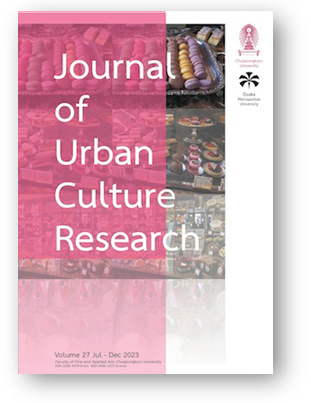The Revolution of Calder’s Kinetic Sculpture to Public Art Space - A Case Study Setting In LACMA’s “Three Quintains”
DOI:
https://doi.org/10.14456/jucr.2023.30Keywords:
Revolution; Public Art Space; Calder’s Kinetic Sculpture; Three Quintains; LACMAAbstract
Alexander Calder’s profound influence on public art, particularly through his kinetic sculptures, remains a significant milestone in the contemporary art world. This study delves into Calder’s life and artistic journey, emphasizing the transformative impact of his iconic work, “Three Quintains” at the Los Angeles County Museum of Art. The paper explores the aesthetic and theoretical foundations of Calder’s kinetic art, highlighting its delicate balance, spatial interaction, and spiritual evocations. Analyzing the sculpture’s impact on visitor experiences and community engagement, the research addresses challenges and ethical considerations related to the integration of kinetic sculptures in public spaces. Furthermore, the study envisions future trajectories for public art, envisioning advancements in technology, inclusivity, sustainability, and interdisciplinary collaboration. Calder’s legacy persists as a testament to the enduring potential of art to reshape urban environments and foster cultural exchange.
Downloads
Published
How to Cite
Issue
Section
License

This work is licensed under a Creative Commons Attribution-NonCommercial-NoDerivatives 4.0 International License.
Authors authorize the JUCR to publish their materials both in print and online while retaining their full individual copyright. The copyright of JUCR volumes is retained by Chulalongkorn University.
The views and opinions expressed herein are those of the individual author(s) and do not necessarily reflect the policies or opinions of the Journal (JUCR), it editors and staff, Chulalongkorn University, or Osaka Metropolitan University.








